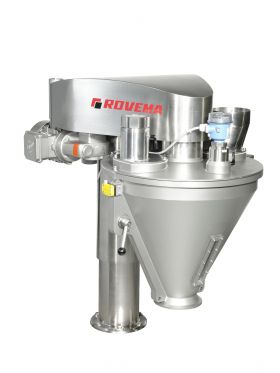4 Factors To Consider When Choosing A Powder Filling Machine
In the world of packaging machinery, it may seem odd to refer to a diverse range of products like baking mixes, ground coffee, spices, and powdered...

Once you have established that an auger filler is the proper method for filling your powder products, you then need to consider what type of closure method will be used to ensure a clean cutoff of your product based on its flow characteristics. It is critical that the auger filler machine produces both an accurate dose but also a distinct “charge” from cycle to cycle. If you choose the wrong closure type, you may lose filling accuracy and run into issues with the product being caught in the horizontal seal.
This concept is based on a product's angle of repose. All powders have this, and it is defined as the maximum slope, measured in degrees from the horizontal, at which loose solid material will remain in place without sliding. In this solution, the auger spins and feeds product, and when the appropriate dose is achieved, the auger stops and the product collects on the spinner plate until the next cycle. The spinner plate is sized to stop the powder from falling over the sides of the plate when the auger has stopped, taking into account the powder's angle of repose. This approach is the simplest method and often achieves very clean cut-offs without having to use more complex closure technologies. Products that often work well with this type of system are granulated free-flowing products such as instant coffee, dry yeast, coffee beans, salt, and granular sugar.
A Long Auger with a Drip Washer or Sieve creates a slight back pressure to prevent product dribble into the seal. Products that often use this type of closure are non-free-flowing powder products such as whole milk powder, flour, ground coffee, or cake mix. Like the spinner plate mentioned above, there are no moving or mechanical parts involved with this type of solution, and it is a relatively simple and effective way to create a clean cutoff.
A third option, which is designed for products whose angle of repose is quite severe, is a Long Auger with a clamshell closure. The clamshell closure uses a mechanical means to physically close and retain any product that may trickle out of the auger during the gap in the filling cycle. This option is useful for free-flowing powder products such as spices, cement, additives, tea, and skim milk powder.
Click here to see outline drawings of the three auger filling options.
An additional technology that is available, which can be useful and used in combination with the options above, is a product compression unit, or sometimes described as a vacuum auger system. Ideal for free-flowing powders for air removal, the product compression is accomplished via air extraction. This process also reduces dust generation during the filling process and better product handling with no drip between cycles. One ancillary benefit is that by compacting or condensing the product, it can sometimes lead to a reduction in the overall package size and thus provide substantial film savings.
A simple bench test for evaluating the flow characteristics of powders is to insert a pencil or pointed, narrow dowel into the top of a container of powder and then remove it. If the hole you created collapses on itself, then the powder would be considered free-flowing. If, however, an impression of the pencil or dowel remains, then the powder is non-free-flowing. Partial collapse might indicate a powder where a specific drip washer or sieve is required at the end of the auger tooling.
Auger manufacturers typically can evaluate and test your product to determine the optimal solution for you and your product. In the end, the decision of the type of auger filler machine closure that is chosen is important for an efficient, accurate, and reliable vertical form fill seal bagging operation.

In the world of packaging machinery, it may seem odd to refer to a diverse range of products like baking mixes, ground coffee, spices, and powdered...

Here are some interesting statistics for you. Stand up pouches are expected to reach 33.4 billion USD globally by 2020. From 2015 to 2020, they have...

1 min read
Editors Note: This blog was originally published in October of 2017 but has been edited and republished with additional content around this topic. ...